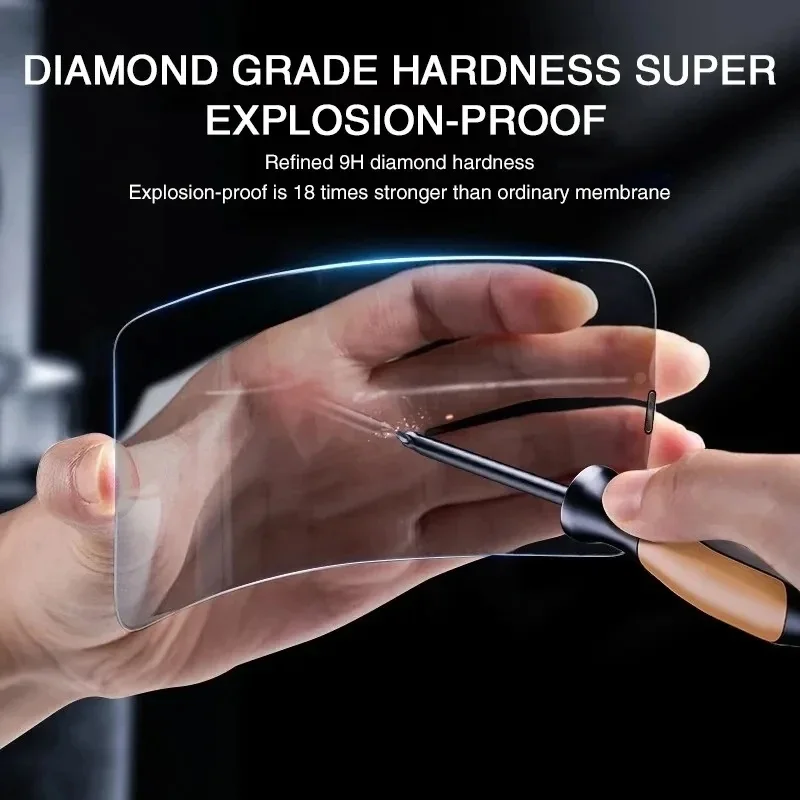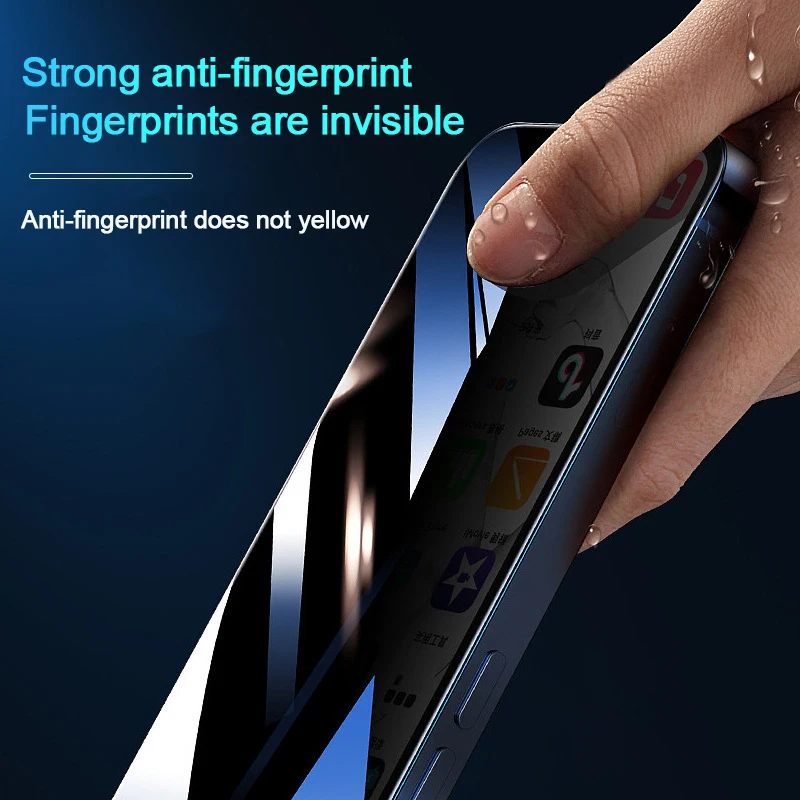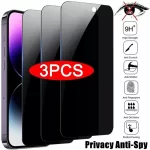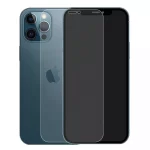Liquid glass screen protectors are a popular choice for device users seeking enhanced protection from scratches, cracks, and other forms of damage. Unlike traditional film or tempered glass protectors, liquid glass utilizes a silica-based solution that bonds with the surface of your device to create a protective layer. Although they design to be durable and long-lasting, there may come a time when you need to remove a liquid glass screen protector. Whether due to a damaged device, a desire to upgrade your protection plan, or simply personal preference, knowing how to properly remove a liquid glass screen protector is essential. This guide aims to provide you with the information and steps needed for a safe and effective removal process.
Understanding the Composition of Liquid Glass Protectors
Before diving into the removal process, it’s important to understand what a liquid glass screen protector is and how it functions. Liquid glass is primarily composed of silica dioxide—commonly found in sand—which, when treated in a specific manner, can form a nano-coating on the surface of your device. This coating design to fill in microscopic imperfections in your screen, creating a smoother surface that is also resistant to scratches, dust, and fingerprints.
The application of liquid glass often market as a straightforward process, typically requiring you to simply wipe the solution onto your screen and allow it to cure. Once applied, the liquid glass penetrates the surface of the device, creating a strong bond that is hard to break. However, this strong adhesion is also what complicates the removal process. Understanding this composition and its bonding characteristics is crucial in knowing how to carefully approach the removal of a liquid glass screen protector, minimizing the risk of damage to your device.

Signs It’s Time to Remove Your Liquid Glass Screen Protector
Identifying the right time to remove your liquid glass screen protector can save you from further damage to your device and enhance its usability. One of the most common reasons for removal is visible damage, such as scratches, chips, or cracks that have formed over time. Although liquid glass is designed to resist such damage, it is not entirely impervious. If you notice that the screen protector is starting to show these signs, it may be an indication to remove it, particularly if the damages begin to obstruct your view or affect touchscreen functionality.
Another sign that you may need to remove the protector is when you switch to a different type of screen protection. Liquid glass can often be incompatible with some tempered glass protectors, and attempting to apply a new protector over the old one could result in bubbles, peeling, or uneven application. Additionally, if you are planning to sell your device or trade it in, you may want to consider removing the liquid glass protector to simplify the viewing experience for potential buyers. These signs are essential indicators that it might be time to embark on the removal process ahead.
The Tools You’ll Need for Removal
Before you start the removal process, gathering the right tools can make your experience smoother and more effective. While the process doesn’t require an extensive toolkit, having a few key items on hand can prevent potential mishaps.
Firstly, a microfiber cloth is indispensable for cleaning the screen before and after the removal process. It helps ensure that no dust or debris gets trapped, which could lead to scratches. You may also want to have a putty knife or a plastic card, such as an old credit or gift card, to gently lift the edges of the screen protector without damaging the underlying device.
Additionally, some users find it beneficial to have isopropyl alcohol and a cotton swab or pad. This can help break down the adhesive bond, making the removal process easier and safer. Be mindful that using alcohol should be done sparingly, as too much could also affect the oleo phobic coating of your device’s screen. With these tools in your possession, you will be well-prepared to begin the removal process.
Preparation: Cleaning Your Device
Before you get to start with the removal itself, it’s essential to take a moment to prepare your device. Cleaning your screen is a crucial first step that not only makes the removal process easier but also protects your device from potential scratches and damage. Begin by powering down your device to ensure safety during the process; this minimizes the risk of accidental inputs that could otherwise complicate things.
Using your microfiber cloth, gently wipe the entire screen to remove any dust, dirt, or fingerprints. This step is especially important as debris trapped underneath the screen during removal could cause scratches or other damage to your phone or tablet. Once you’ve completed this initial cleaning, you may optionally use a small amount of isopropyl alcohol on the microfiber cloth to further clean the surface. However, make sure to let it dry completely before starting the removal process. The cleaner your screen is, the smoother and safer your removal will be.

Step-by-Step Guide to Removal
Now that you have prepared your workspace and gathered your tools, it’s time to dive into the step-by-step removal process. Begin by identifying a corner of your device’s screen where the liquid glass protector is slightly lifting or where you can insert your plastic card or putty knife. It is best to start from the corner to minimize the risk of breaking the protector into shards, which could create a mess and pose a risk to your device.
Once you have found a suitable edge, gently slide the plastic card beneath the edge of the protector. Be cautious and apply minimal pressure; you only want to lift it slightly, enough to create an opening. Once you have managed to lift the edge, continue to slide the card along the perimeter, gently prying the protector away from the screen. If you encounter any resistance, refrain from forcing it as this could lead to cracks in your glass screen. Instead, go back to the area and apply a little isopropyl alcohol with a cotton swab to weaken the bond.
Once the protector has entirely removing, take a moment to examine your device’s screen for any remaining adhesive or residue. Use your microfiber cloth to wipe it clean. Should any adhesive remain, a small amount of isopropyl alcohol on your cloth can help in dispersing it efficiently. This must be done gently to avoid damaging the screen itself. Once satisfied, your device will be ready to either continue using as is or to apply a new form of protection.
Aftercare: What to Do Post-Removal
After you’ve successfully removed your liquid glass screen protector, it’s essential to follow through with certain aftercare measures to ensure the longevity and integrity of your device. First, inspect the surface of your device thoroughly for any scratches or damages that may not have been visible previously. Maintaining a close eye on the condition of your device will help you determine if you need to take further protective measures, such as applying a new screen protector or seeking professional repairs.
Next, consider how you’ll protect your device moving forward. If you plan on applying a new screen protector, give your device some time to breathe. It’s advisable to wait at least 24 hours before applying a new liquid glass or traditional screen protector. This allows any residual moisture or alcohol used during the removal process to evaporate completely, ensuring that the new protector adheres properly.
Additionally, using an appropriate case will minimize the risk of further damage. Soft-shell cases can provide a substantial buffer against impact, while also allowing for better grip to prevent accidental drops. Lastly, regular cleaning of your device will enhance its longevity and usability, with microfiber cloths being the best option to maintain the pristine condition of your screen.

Conclusion: Emphasizing Caution and Care
Removing a liquid glass screen protector may seem daunting at first, but with the proper knowledge, tools, and techniques, the process can be straightforward and worry-free. By understanding the materials involved, recognizing the signs for removal, and employing a methodical approach, you can ensure that your device remains in top condition throughout the process.


